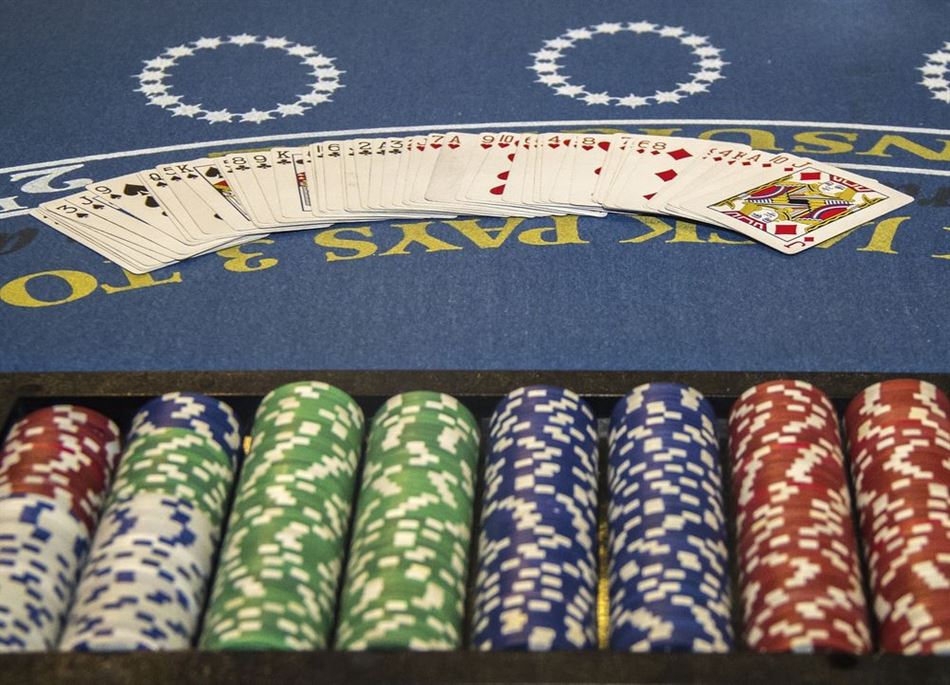Poker tournaments have gained immense popularity over the years, captivating both professional players and casual enthusiasts alike. The World Series of Poker (WSOP) and the World Poker Tour (WPT) stand as two of the most prestigious and widely recognized poker tournament series in the world. This article delves into the thrilling journey of poker players as they navigate through these renowned tournaments, showcasing their skills, strategies, and the electrifying atmosphere that surrounds the world of competitive poker.
The Evolution of Poker Tournaments: From WSOP to WPT
The WSOP, established in 1970, is widely regarded as the pinnacle of poker tournaments. It all started with a small gathering of players at Binion’s Horseshoe Casino in Las Vegas. The tournament quickly gained popularity, attracting more participants each year. The WSOP’s main event, the $10,000 No-Limit Hold’em Championship, has become the most coveted title in the poker world.
Over the years, the WSOP has grown exponentially, both in terms of the number of events and the prize money on offer. Today, the series consists of more than 80 events, featuring a wide range of poker variants and buy-ins to cater to players of all levels. The prize pools have reached staggering amounts, with millions of dollars up for grabs in some events. The WSOP has also expanded its reach beyond Las Vegas, with international events held in Europe, Asia, and Australia.
While the WSOP remains the pinnacle of poker tournaments, the World Poker Tour has emerged as a formidable competitor. Founded in 2002 by television producer Steven Lipscomb, the WPT revolutionized the way poker tournaments were presented to the public. The WPT introduced the concept of “hole card cams,” allowing viewers to see the players’ hole cards, adding a new level of excitement and strategy to the game.
The WPT quickly gained popularity, attracting top players and sponsors from around the world. Its main event, the WPT Championship, became a must-attend tournament for professional players. The WPT also introduced the concept of “WPT Boot Camps,” offering amateur players the opportunity to learn from the pros and improve their game.
One of the key differences between the WSOP and the WPT is the format of their main events. The WSOP’s main event is a freezeout tournament, meaning once a player loses all their chips, they are eliminated from the tournament. In contrast, the WPT’s main event allows players to re-enter if they bust out during the early stages, giving them a second chance to make a deep run.
Both the WSOP and the WPT have had a profound impact on the poker world. They have elevated the game to new heights, attracting a wider audience and inspiring a new generation of players. The success of these tournaments has also led to the creation of numerous other poker series, such as the European Poker Tour and the Aussie Millions, further expanding the global reach of the game.
Strategies and Techniques for Success in Poker Tournaments
First and foremost, it is essential to have a deep understanding of the game itself. Knowing the rules, hand rankings, and different variations of poker is crucial. This knowledge will allow you to make informed decisions and adapt your strategy based on the specific circumstances of each hand. Additionally, studying the strategies employed by successful players can provide valuable insights into the game and help you develop your own unique approach.
One of the most important aspects of tournament play is managing your bankroll effectively. Unlike cash games, where you can buy more chips at any time, tournaments have a fixed buy-in and a limited number of chips. This means that you must carefully consider each decision and avoid unnecessary risks that could lead to an early exit. It is crucial to strike a balance between playing aggressively to accumulate chips and playing conservatively to preserve your stack.
Another key strategy is to be aware of your position at the table. The position you are in relative to the dealer button can greatly influence the strength of your hand and the actions you should take. Being in late position allows you to have more information about your opponents’ actions before making your own decision, giving you a significant advantage. Conversely, being in early position requires more caution, as you have less information to base your decisions on.
Furthermore, understanding the concept of pot odds and implied odds can greatly enhance your decision-making abilities. Pot odds refer to the ratio of the current size of the pot to the cost of a contemplated call. By comparing the pot odds to the odds of completing your hand, you can determine whether a call is profitable in the long run. Implied odds, on the other hand, take into account the potential future bets you can win if you hit your hand. These concepts allow you to make more informed decisions and maximize your potential winnings.
In addition to these strategies, mastering the art of reading your opponents is crucial in tournament play. Paying attention to their betting patterns, body language, and verbal cues can provide valuable insights into the strength of their hand. This information can help you make more accurate decisions and gain an edge over your opponents. However, it is important to remember that reading opponents is not an exact science and should be used in conjunction with other strategies.
Lastly, maintaining a disciplined mindset is essential for success in poker tournaments. It is easy to get caught up in the excitement and make impulsive decisions based on emotions. However, staying focused, patient, and disciplined will allow you to make rational decisions and avoid costly mistakes. Remember that poker is a game of skill and strategy, and long-term success requires a consistent and disciplined approach.
The Thrill and Excitement of High-Stakes Poker Tournaments
One of the most exhilarating aspects of high-stakes poker tournaments is the level of skill and strategy required to succeed. These tournaments are not for the faint of heart or the casual player. They attract the best of the best, those who have honed their skills through years of practice and dedication. The players at these tournaments are masters of the game, able to read their opponents, calculate odds, and make split-second decisions that can mean the difference between victory and defeat.
The atmosphere at these tournaments is electric, with the tension palpable in the air. The stakes are high, and the pressure is intense. Every decision matters and every hand can change the course of the game. The players are constantly analyzing their opponents, looking for any sign of weakness or strength. It’s a battle of wits and nerves, where one wrong move can cost you everything.
The thrill of high-stakes poker tournaments is not just limited to the players. Spectators and fans also get caught up in the excitement, eagerly watching every hand and cheering for their favorite players. The energy in the room is contagious, with the crowd erupting in applause and cheers as a player makes a bold move or pulls off a stunning bluff. It’s a spectacle unlike any other, where the drama unfolds in real time, and the outcome is never certain until the final card is dealt.
The allure of these tournaments goes beyond the thrill of the game itself. The massive cash prizes that are up for grabs add an extra layer of excitement. The WSOP, for example, has a main event with a buy-in of $10,000, and the winner walks away with millions of dollars. The WPT also offers substantial prize pools, with some tournaments boasting payouts in the millions. For many players, the dream of winning a life-changing sum of money is what drives them to compete at the highest level.
But it’s not just about the money. High-stakes poker tournaments also offer players the opportunity to test their skills against the best in the world. It’s a chance to prove themselves and earn the respect of their peers. The prestige that comes with winning a major tournament is invaluable, and it can open doors to lucrative sponsorship deals and endorsement opportunities.
Behind the Scenes: Organizing and Running Poker Tournaments
One of the key aspects of organizing a poker tournament is selecting the right venue. The venue must be able to accommodate a large number of players and provide a comfortable playing environment. Additionally, it should have the necessary facilities to support the event, such as ample parking, food and beverage options, and security measures.
Once the venue is secured, the next step is to determine the tournament format. There are various formats to choose from, including freezeouts, rebuys, and shootouts. Each format has its own set of rules and regulations, which must be clearly communicated to the participants. It is essential to ensure that the format selected is suitable for the target audience and aligns with the overall objectives of the tournament.
Another crucial aspect of organizing a poker tournament is creating a schedule. The schedule should include details such as the start and end times of each day, breaks, and the duration of each level. It is important to strike a balance between providing enough playing time for participants and ensuring that the tournament runs smoothly and efficiently.
In addition to the schedule, the tournament organizers must also establish the blind structure. The blind structure determines the rate at which the blinds increase throughout the tournament. It is crucial to strike a balance between allowing players enough time to make strategic decisions and maintaining a reasonable pace of play. A well-designed blind structure can greatly enhance the overall experience for both players and spectators.
Furthermore, organizing a poker tournament involves managing the registration process. This includes setting up an online registration system, collecting entry fees, and ensuring that all participants meet the eligibility criteria. It is essential to have a dedicated team to handle the registration process and address any queries or concerns from the participants.
Once the tournament is underway, the organizers must ensure that the rules and regulations are strictly enforced. This includes monitoring the players’ conduct, ensuring fair play, and resolving any disputes that may arise. It is crucial to have a team of experienced floor staff and dealers who are well-versed in the rules of the game and can handle any situation that may arise.
Additionally, running a successful poker tournament requires effective marketing and promotion. This involves creating a buzz around the event, attracting top players, and generating interest from the media and sponsors. A well-executed marketing strategy can significantly impact the success of the tournament and help attract a larger audience.
Famous Moments and Memorable Stories from Poker Tournaments
One of the most iconic moments in poker tournament history occurred during the 1988 WSOP Main Event. It was the final hand, and Johnny Chan, a seasoned professional, was facing off against the young and relatively unknown amateur, Erik Seidel. As the tension in the room reached its peak, Chan made a bold move, going all-in with a full house. Seidel, undeterred, called the bet and revealed his hand—a higher full house. The room erupted in applause as Seidel became the youngest WSOP Main Event champion at the time, and a legend was born.
Another unforgettable moment took place during the 2003 WSOP Main Event. Chris Moneymaker, an accountant from Tennessee, had qualified for the tournament through an online satellite. Against all odds, he found himself at the final table, facing off against seasoned professionals. In a pivotal hand, Moneymaker bluffed his way to victory, causing his opponent, Sam Farha, to fold what would have been a winning hand. Moneymaker’s triumph not only earned him the coveted WSOP bracelet but also sparked a poker boom, as his story inspired countless amateurs to try their luck at the tables.
The WPT has also had its fair share of memorable moments. In 2004, Gus Hansen, known for his aggressive playing style, made history by winning three consecutive WPT titles. His dominance at the tables was unprecedented, and his fearless approach to the game captivated audiences worldwide. Hansen’s achievement solidified his status as one of the greatest poker players of his generation and left a lasting impact on the poker community.
In 2007, the WPT witnessed a remarkable display of skill and resilience from Phil Hellmuth. Known for his fiery personality, Hellmuth found himself heads-up against Mike Sexton in the Bay 101 Shooting Star event. With a massive chip disadvantage, Hellmuth managed to mount an incredible comeback, eventually defeating Sexton and claiming the title. This victory marked Hellmuth’s record-breaking 11th WPT bracelet, further cementing his reputation as one of the game’s all-time greats.
While these moments and stories highlight the triumphs and achievements of poker tournament participants, they also serve as a reminder of the unpredictable nature of the game. In poker, even the most skilled players can fall victim to bad luck or a well-timed bluff. It is this element of uncertainty that keeps players and spectators coming back for more, eager to witness the next unforgettable moment unfold.
In conclusion, poker tournaments have provided us with countless famous moments and memorable stories throughout the years. From Johnny Chan’s showdown with Erik Seidel to Chris Moneymaker’s improbable victory, these events have showcased the drama, skill, and unpredictability that make poker tournaments so captivating. Whether it’s the WSOP or the WPT, these tournaments continue to produce legends and inspire new generations of players to test their mettle at the tables. As we eagerly await the next chapter in poker tournament history, we can only imagine the incredible moments and stories that lie ahead.




